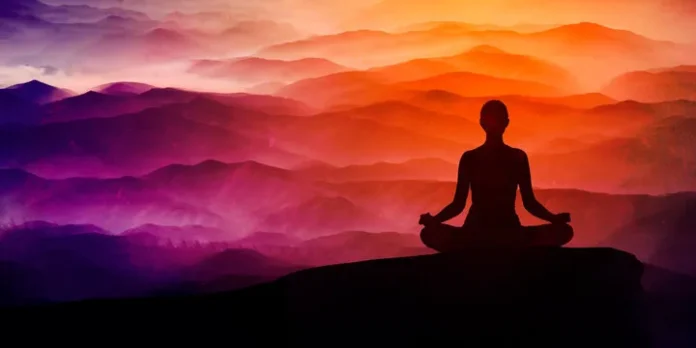Unwind, restore, and rejuvenate with the power of yoga. This is a step-by-step guide to finding your calm, happy self through stress-relieving famous yoga poses, breathing techniques, and mindfulness practices.
Anyways to Unwind in a Hectic World: Yoga for Stress Relief

Stress today has become an uninvited and relentless companion in our fast, grossly interconnected world. All the demands, deadlines, and digital distractions appear to be draining the life out of people. Whereas modern life reveals a myriad of ways one can adopt to help manage stress, no holistic and effective way compares to what is done through yoga. This ancient practice proposes a route to inner peace, resilience, and well-being.
It combines asanas, pranayamas, and mindfulness techniques that help eradicate stress, alleviate mood, and provide better living. So let’s break down the scientific backing behind yoga’s powers in busting stress and a bevvy of poses to fit your every need.
Understanding Your Body’s Alarm System: The Stress Response
Embracing yoga’s real potential as a way to ease tension requires an understanding of how stress impacts your body and mind. When there is a threat or problem, the body starts the fight-or-flight response, which pours stress chemicals into the blood—such as cortisol and adrenaline. Such a reaction may be helpful in survival situations but results, if overstressed and constantly activated, in all kinds of painful physical and psychic disturbances, from anxiety and depression to disorders in gastroenterology or immunodeficiency.

Yoga rebalances the stress response through parasympathetic nervous system activation, which is responsible for relaxation and restoration. This is accomplished through postures, control of breathing, and meditation techniques. This physiologic shift will bring on calm, reduce feelings of anxiety, and return the body to balance.
A Dedicated Practice Space
Create a space that allows for relaxation, and concentration, and makes you feel good. Find a quiet room where there won’t be much disturbance. You could then create the atmosphere by dimming the lights, using fragrances, or simply being comfortable with what you have on. Maybe there could be plants or even a little light from nature to connect one to the outdoors subtly.
Your Foundation Building: Grounding and Centering Poses
First, you will have to start with the basics, then the complex poses. The grounding and centring postures are those that improve balance, stability, and body awareness so that ‘falling’ into a deeper state of relaxation is possible.
Tadasana (Mountain Pose):
This basic pose forms the base of every posture, grounding one to the earth. The feet are apart at hip width, the core contracted, and the weight on both legs is distributed uniformly. Feel the ground under your feet.
Tree Pose:
This balancing posture will help develop focus, concentration, and stability. Begin in Mountain Pose. Shift your weight onto one foot, then bring the sole of the other foot to your inner thigh or ankle. Balance using the reach of the arms overhead with palms together.
Warrior I (Virabhadrasana I):
This has been termed one of the most powerful yoga postures since it develops power, endurance, and courage. This works as the opening of your hips, legs, and chest. Step your right foot forward so you are in a lunge position—the right foot at a 90-degree angle to the left—and stretch your arms over your head.
Deep Relaxation: Soothing and Restorative Poses
These postures deepen relaxation and relieve muscular tension, thus quieting the mind.
Balasana—Child’s Pose:
This comforting pose lightly stretches the back, hips, and thighs. Kneel then sits behind, folding forward and lowering the forehead down.
Adho Mukha Svanasana—Downward-Facing Dog:
This inverted pose creates a full-body stretch, improves circulation, and relaxes the mind. Begin by being on all fours, then lift your hips off the ground, creating an upside-down V shape with your body.
Cat-Cow Pose:
The spine’s undulation massages the vertebral column, flexing it to relieve tension. Begin by getting onto your hands and knees. First, arch your back down, then create a cat-like curve. Next, let your belly drop like a cow.
Corpse Pose:
This is the relief posture that allows the body and mind to completely relax. Lie on your back, stretching your legs out in front of you, with your arms relaxed at your sides. Close your eyes and release the tension.
Balancing Body and Mind: Cooling and Energizing Poses
Though these poses might sound counterintuitive for relieving stress, they will help balance out energy levels from within and leave refreshing feelings.
Bridge Pose (Setu Bandhasana):
This backbend opens the chest, circulates the blood, and raises spirits. Lie on your back with your knees bent and feet flat on the floor. Supporting the lower back with your hands on your hips, slowly raise your hips towards the ceiling.
Legs-Up-the-Wall Pose (Viparita Karani):
This restorative inversion will be calming to the nervous system, help reduce swelling in the legs and calm. You lie on your back, extending your legs up the wall.
Inversions: Headstand and Handstand—These advanced poses aren’t suited for everyone, but when practised safely, they increase the blood supply to the cells of the brain, augment vigour, and enhance concentration.
The Power of Breath: Pranayama Techniques
Pranayama controls the breath and is considered one of the cardinal yoga practices, along with the asanas. It brings calm to the mind, reduces anxiety, and builds up positive health. Here are some simple pranayama techniques one can practice:
Diaphragmatic Breathing:



